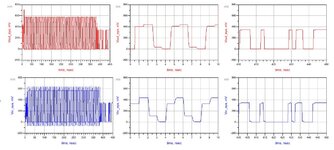henry kissinger
Member level 2
ADS function 'FrontPanel_eye()' can create eye diagram from the transient voltage of a circuit node.
However if I only want the eye diagram at specific interval instead of the whole transient time. How should I do it?
Below graph on the left are the 0~450nsec (whole transient time). I am only interested in 0~10 nsec and over 400 nsec. How should I create eye diagram of these 2 interval?
However if I only want the eye diagram at specific interval instead of the whole transient time. How should I do it?
Below graph on the left are the 0~450nsec (whole transient time). I am only interested in 0~10 nsec and over 400 nsec. How should I create eye diagram of these 2 interval?
